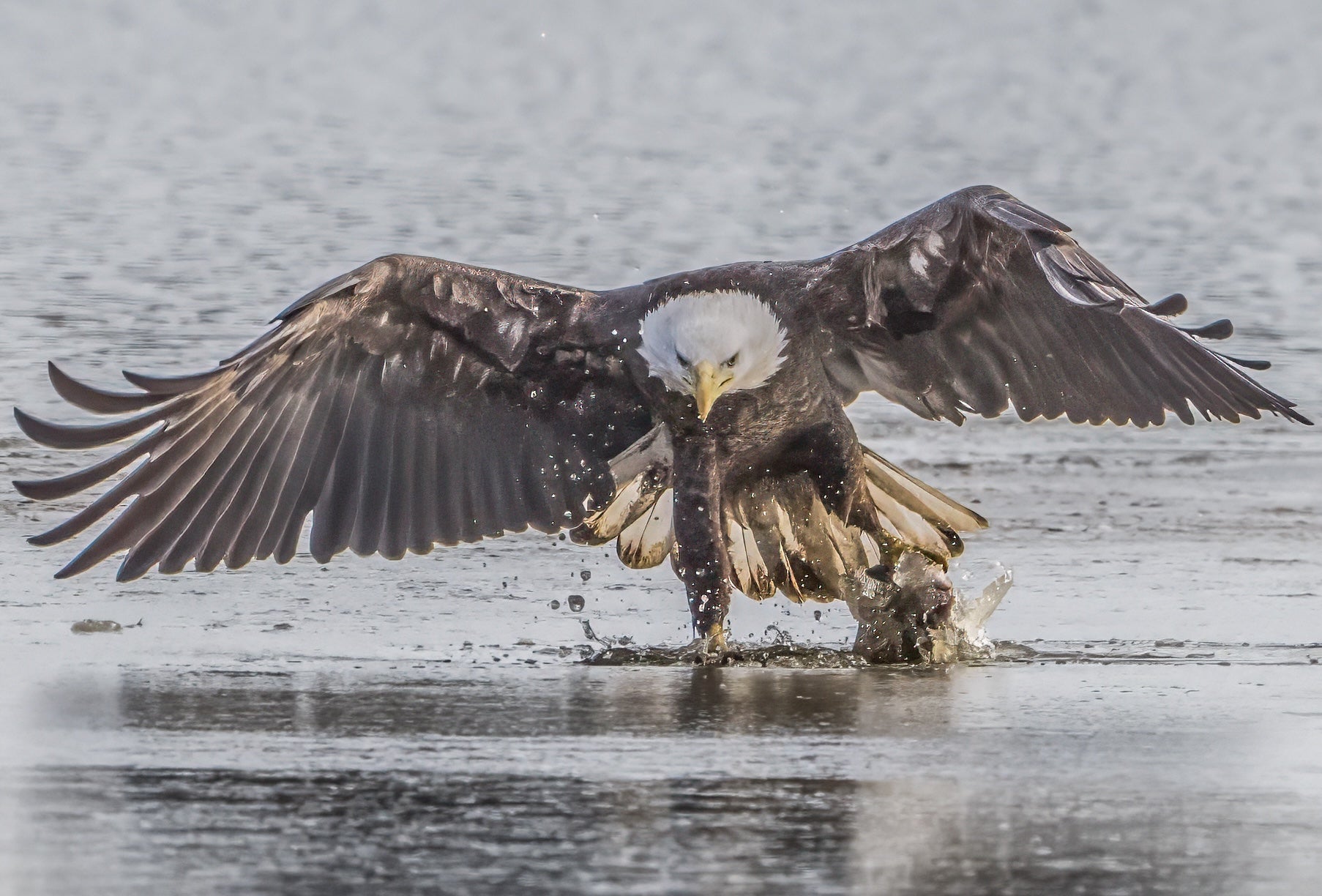
This story is part of the WHYY News Climate Desk, bringing you news and solutions for our changing region.
From the Poconos to the Jersey Shore to the mouth of the Delaware Bay, what do you want to know about climate change? What would you like us to cover? Get in touch.
In the early 1980s, New Jersey was on the brink of losing its last remaining bald eagles. Only one nesting pair existed in the state, and their eggs weren’t hatching because of the lingering effects of the insecticide DDT, which was banned in 1972.
Following decades of restoration work, bald eagles now nest in every New Jersey county. This week, the state removed the bald eagle off its endangered species list — more than 17 years after the majestic bird was federally delisted.
“I’ve been around a long time and have not seen very many species delisted. So, it really is a very special thing,” said Kathy Clark, chief of the endangered and nongame species program at New Jersey Fish and Wildlife.
In 2024, New Jersey surveyed a record 293 nesting pairs of bald eagles, of which 264 laid eggs. Their highest numbers are found along the Delaware Bay, where protected marshlands and coastal creeks provide ideal habitats. The state was able to delist the species because their reproductive rate over multiple years reached sustainable levels.
The success story follows years of artificially incubating eggs, introducing eagle chicks from Canada, monitoring nests and educating the public.
“What this really shows is that big picture conservation is possible. It starts with an inspirational spark that causes a wide swath of people to care deeply, and then the work requires learning, effort and perseverance over the long term,” said Alex Ireland, president and CEO of the environmental group New Jersey Audubon. “It’s very important that we think about this proactively as we go forward. It is much better to conserve species before listing is ever required.”
Following the nationwide recovery of the bald eagle, starting in the Chesapeake Bay, the U.S. Fish and Wildlife Service delisted the predatory bird in 2007.
The national ban on DDT, as well as policies aiming to protect birds of prey, played a role in the eagles’ recovery, said Jason Weckstein, an ornithologist at the Academy of Natural Sciences of Drexel University.
“Eagles are an amazing success story. They went from being pretty rare — it was not something that you saw in the suburbs — and now, here in my neighborhood in Wynnewood, I see bald eagles all the time,” he said. “Look up, because there’s a good chance you’ll be able to see an eagle.”
However, several states did not immediately remove bald eagles from their own endangered species lists. For example, Pennsylvania made the move in 2014.
